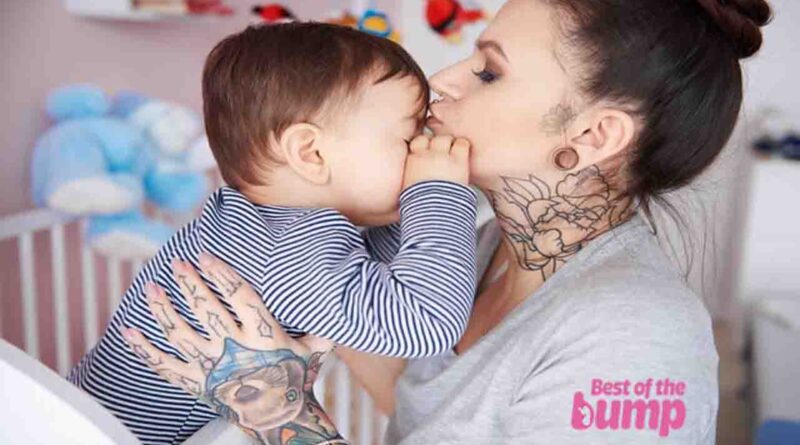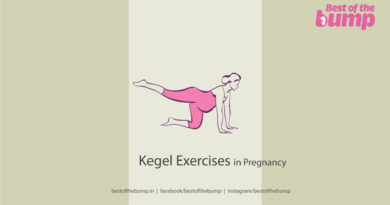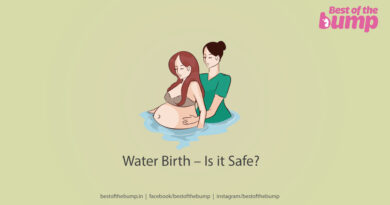Can you get a tattoo while breastfeeding ?
Tattoo while breastfeeding -In many countries, both breastfeeding and tattooing are experiencing a resurgence in popularity. If you’re a nursing mother with a tattoo or considering getting one, you might be wondering about the safety of breastfeeding in this context. Here’s what you need to know.
Is it safe to get a tattoo while breastfeeding?
Tattoos involve injecting ink into the dermal (second) layer of the skin, typically using a hand-held electric machine with needles coated in ink. While tattoo inks in the United States are subject to FDA regulation as cosmetics, none are approved for injection under the skin. These inks can contain various compounds, including heavy metals like cadmium, cobalt, and manganese.
Some synthetic and vegan ink brands are available. It’s generally believed that ink molecules are too large to pass into breast milk during the tattooing process. Once the ink is injected into the skin, it becomes trapped. However, whether or not the ink can pass into breast milk as it gradually breaks down in the body over months to years remains unknown.
Breastfeeding women should be aware that the general risks associated with tattooing also apply to them. The most common risks include local and systemic infections. Local infections may occur if the recommended aftercare regimen, such as keeping the tattoo clean with mild soap and water, not picking at scabs, and avoiding sun exposure, is not followed.
Allergic reactions to the ink can happen as well, with red inks being the most common culprits, even after previous tattoos. Pain management, often involving Tylenol, may be necessary. Systemic infections can occur when tattoo artists fail to follow universal precautions, leading to diseases like hepatitis, tetanus, and HIV.
It’s crucial to select your tattoo artist and shop carefully. Check with your local health department for relevant laws and regulations. Professional tattooists follow universal precautions, including sterilization of tattoo machines with an autoclave, using single-use inks, ink cups, gloves, and needles, bagging equipment to prevent cross-contamination, and maintaining rigorous hand hygiene with disinfectant soap.
Most tattoo artists will refuse to tattoo pregnant or breastfeeding mothers. This isn’t only for the artist’s liability protection but also to safeguard the baby from potential diseases and to allow the mother’s body to heal. It’s advisable for mothers to wait at least until 9-12 months after giving birth, when the child is no longer solely dependent on breast milk, before getting a tattoo. Reputable tattoo artists will typically have a waiver for clients to sign, which includes questions about pregnancy and breastfeeding.
Is it safe to have a tattoo removed while breastfeeding?
Tattoo removal is now primarily achieved through the use of lasers. This process involves the use of laser energy to break down tattoo pigment, causing it to shatter into smaller particles. These smaller fragments are then taken up by the body’s immune system and eventually filtered out through the liver. However, there are several factors to consider when contemplating tattoo removal while breastfeeding:
- Lengthy Process: Tattoo removal typically requires multiple sessions, often totaling 8-10 sessions. These sessions are spaced 4-8 weeks apart.
- Potential Pain and Side Effects: The removal process can be painful and may lead to side effects such as blistering and scarring. It’s important to be prepared for the discomfort associated with tattoo removal.
- Incomplete Removal: In some cases, the tattoo may not be fully removed, leaving behind traces of ink.
- Similar Risks to Tattooing: Many of the risks associated with getting a tattoo also apply to the laser removal process. These risks include the possibility of infection due to improper aftercare and the potential for an allergic reaction to the “free” ink particles released during the removal.
- Unknown Impact on Breast Milk: There have been no specific studies conducted on the increased amounts of ink released into a mother’s body during the laser removal process. It remains uncertain whether the ink particles are small enough to enter breast milk.
As a precaution, it is generally recommended that mothers wait until they have completed the weaning process before undergoing any laser tattoo removal. This is because there is limited evidence regarding the safety of tattoos and breastfeeding, and the potential for ink particles to enter breast milk during the removal process is not well understood.
While the act of having a tattoo placed should not directly affect the breastfeeding relationship, the potential impact of tattoo inks, especially during laser removal, on breast milk is a concern. It’s crucial to carefully evaluate your options and seek out professional advice from a tattoo artist who is experienced in working with nursing mothers. Ultimately, the decision to adorn your body with tattoos or opt for tattoo removal while breastfeeding should be made with a thoughtful consideration of the pros and cons, keeping the well-being of your baby in mind.
Here’s the list of references used in the article
- Armstrong, M., Roberts, A., Koch, J., Saunders, J., Owen, D., & Anderson, R. (2008). Motivation for contemporary tattoo removal: a shift in identity. Arch Dermatol, 144(7), 879-884.
- Both, D. F., Kerri. (2008). Breastfeeding: An illustrated guide to diagnosis and treatment. Marrickville, NSW: Elsevier Australia.
- DeBoer, S., Seaver, M., Angel, E., & Armstrong, M. (2008). Puncturing myths about body piercing and tattooing. Nursing, 38(11), 50-54.
- FDA, (2008). Tattooing & Permanent Makeup. Retrieved September 10, 2009, from http://www.fda.gov/Cosmetics/ProductandIngredientSafety/ProductInformation/ucm108530.htm
- Gilbert, S. (2000). Tattoo History: A Source book. New York: Juno Books, LLC.
- Gray-Wolfstar, T., & Wolfstar, G. (2007). Tattoos, body piercing, and nursing: a photo essay. Interview by Jason P Smith. Am J Nurs, 107(4), 54-57.
- HMBANA, H. M. B. A. o. N. A. (2012). Guidelines for Establishment and Operation of a Donor Human Milk Bank. Raleigh, NC: Human Milk Banking Association of North America, Inc.
- Hudson, K. L. (2009). Living canvas: your total guide to tattoos, piercing, and body modification. Berkeley, CA: Seal Press: Distributed by Publishers Group West.
- Reardon, J. (2008). The Complete Idiot’s Guide to Getting a Tattoo. New York: Penguin.
- Riordan, J., & Wambach, K. (2009). Breastfeeding and human lactation (4th ed.). Sudbury, MA: Jones and Bartlett Publishers.
- Roche-Paull, Robyn. (2009). Body Modifications and Breastfeeding. New Beginnings, 29(4), 4-8.
- Wilson-Clay, B., & Hoover, K. (2005). The breastfeeding atlas (3rd ed.). Manchaca, Tex.: LactNews Press.




